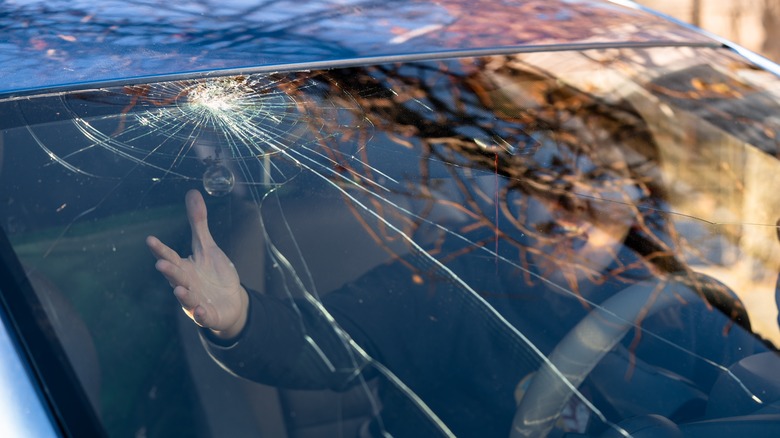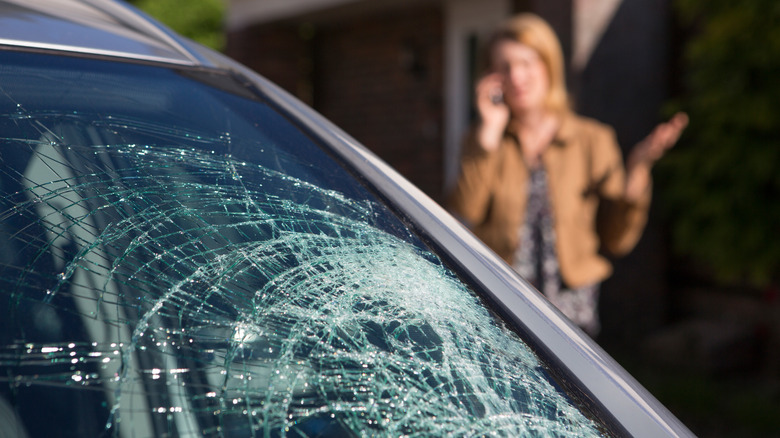Is It Illegal To Drive Around With A Broken Windshield?
There are federal laws that govern broken windshields, and then there are the 50 different state regulations on the topic (plus D.C., of course), with some of those states having free windshield replacement laws. Just remember that the specific laws that apply to you are those of the state you are traveling through at any given moment, not the state where your car is registered — unless you never leave your home state.
Let's start with the federal regulations from the U.S. Department of Transportation that apply to broken windshields. These state that your windshield may have no cracks bigger than 3/4 of an inch in diameter, with no two of those cracks permitted to be within three inches of each other. That's it for the Feds. Next come the state regs, which can vary quite a bit from each other when it comes to your windshield. While 21 states conform to the federal standards, the other 29, plus D.C., vary from those basic requirements.
There are three states where it's unlawful to drive with any type of broken windshield — period. These locations include California, Idaho, New Hampshire, and South Dakota. The remaining 26 localities have varying specific requirements as to how large the cracks in your windshield can be, where they may be located, and that they may not obstruct the driver's vision. Check your state's regulations (and those of states you travel to) to be sure your windshield passes.
Why is it important to drive with a windshield that isn't broken?
Your windshield, which can be one of several different types, plays a significant role in protecting you, keeping the roof from collapsing in the event of an accident. It also helps your airbags to properly deploy during an impact. A broken windshield reduces the structural integrity of your vehicle, affecting how well it performs in these situations.
Another issue with newer vehicles is that they may have a variety of sensors and cameras built into their windshields, used for Advanced Driver Assistance Systems (ADAS). ADAS systems are used for automatic emergency braking, lane-keeping assist, adaptive cruise control, and other driver assistance technologies. If your windshield is cracked in the areas where these cameras and sensors need to 'see' through the windshield, these features will not work properly. This creates a safety hazard for the driver, other occupants in the vehicle, those sharing the road, and pedestrians.
Finally, how well you can see through your windshield is extremely important. After all, the quality of your vision is key to your ability to see what's going on and respond to it. Broken windshields make it more difficult to see clearly, especially at night or in bad weather. While some minor chips and cracks in your windshield can be repaired without replacing it, larger cracks are likely to require a replacement — better safe than sorry.

